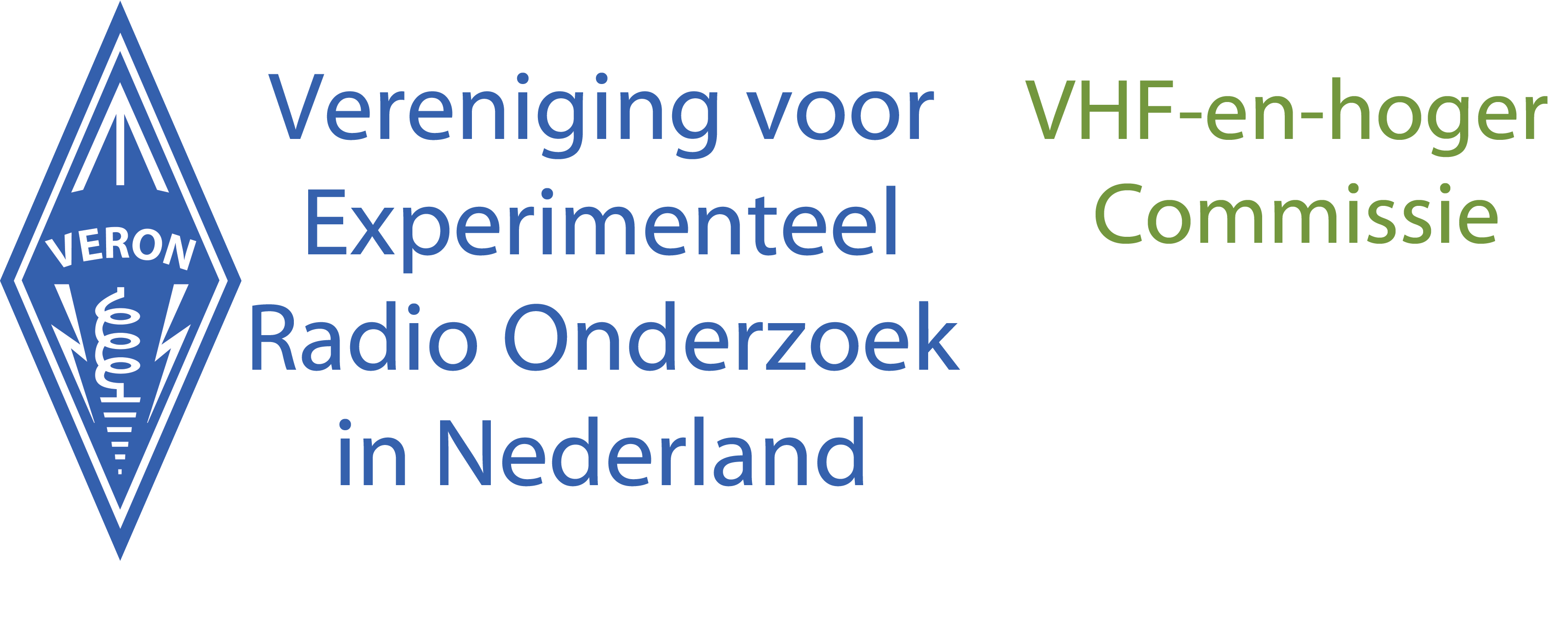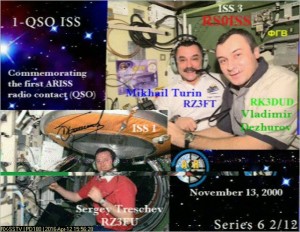In de komende week staan er 2 schoolcontacten op de lijst van werkzaamheden voor de astronauten in ISS.
- Maandag 13 februari om 14:00:35 UTC met het Collège André Malraux, in Chatelaillon-Plage, Frankrijk. Dit is een direct contact van F4KJT met Thomas Pesquet, KG5FYG. Het contact verloopt dit keer in de Franse taal. De kans is groot dat tijdens dit Franse contact ook DATV beelden vanuit ISS kunnen worden ontvangen.
- Donderdag 16-2-2017 om 09:50:26 UTC met de 3rd Junior High School in Komotini, Griekenland. Dit is een direct contact van SV7APQ met astronaut Shane Kimbrough, KE5HOD. Tijdens dit contact is er ook een live stream via youtube beschikbaar op https://www.youtube.com/channel/UCVeCKKrZ-5W1uajgvg7RLUw/live
Beide contacten zijn geheel of gedeeltelijk te ontvangen in Nederland.
Hieronder volgt voor beide scholen een korte beschrijving en de lijst met vragen die gesteld gaan worden.
73’s
Bertus, PE1KEH
Toelichting bij het Collège André Malraux in Chatelaillon-Plage
An International Space Station school contact has been planned with participants at Collège André Malraux, Chatelaillon-Plage, France on 13 Feb. The event is scheduled to begin at approximately 14:00 UTC. The duration of the contact is approximately 9 minutes and 30 seconds. The contact will be direct between FX0ISS and F4KJT. The contact should be audible over portions of France and adjacent areas. The public downlink frequency is 437.525 MHz. The contact is expected to be conducted in French.
The André Malraux middle school is located 10 km south of la Rochelle, in the resort of Châtelaillon-Plage. The middle school offers courses of general education and a complementary curriculum for disabled students (pervasive developmental disorders or autism spectrum disorders).
The middle school has six classes for the sixth year students; six classes for the fifth year students,
six classes for the fourth year students and six classes for the third year students. The languages taught are English, German, Spanish and Latin. This school year 2016-2017, the college has 600 students who are spread over four levels, in which ULIS (Local Inclusion Unit) serves students with special needs and they benefit from inclusion in the classroom.
Participants will ask as many of the following questions as time allows:
- Qu’avez-vous ressenti lors du décollage de la base de Baïkonour?
- Le temps passe-t-il plus vite ou moins vite dans l’espace que sur terre?
- Y-a-t-il du bruit dans l’espace?
- D’où provient l’eau que vous utilisez, où est-elle stockée, comment est-elle purifiée?
- Avec l’impesanteur, comment faites-vous le « ménage » dans la station spatiale?
- Peut-on faire du feu dans l’ISS et que se passerait-il en cas d’incendie?
- Comment évoluent vos plantations dans l’espace? La laitue est-elle orange, verte ou rose? A-t-elle poussé en grosse quantité?
- En quoi les rayons ultraviolets favorisent-ils la pousse des laitues dans l’espace?
- Peut-on encore améliorer la mesure du temps? Si oui, comment?
- En quoi consiste vos recherches sur le plasma et quelle est l’utilité de ces recherches?
- Quels sont les effets sur les os, les muscles et l’organisme humain d’un séjour dans l’espace?
- Peut-on attraper des maladies en apesanteur?
- A quoi pensez-vous quand vous regardez la Terre?
- Comment allez-vous vous réadapter à la vie sur terre?
- Qu’est-ce qui est prévu à bord de la station en cas d’urgence médicale?
- Qu’avez-vous ressenti lors de la sortie hors de la station spatiale internationale?
- Quelle est l’utilité des sorties extra-véhiculaires?
- Clémence D. (12): Qu’est-ce qui vous a donné envie d’être astronaute?
- Qu’auriez-vous fait depuis 7 ans si vous n’aviez pas été astronaute?
- Si c’est possible, voulez-vous aller sur Mars?
Translated:
- What did you feel like when you took off from Baikonour?
- Does time go faster in space than on earth?
- Is there noise in space?
- Where does the water you use come from? Where do you store it and how is it cleared?
- How do you do housework with gravity?
- Can you make fire on board? What would happen in case of a fire?
- How are your plants growing? Is lettuce orange, green or pink? Has it grown really fast?
- In what ways are ultraviolet rays favored? space?
- Can we measure time any better? If so, how?
- What do your researches on plasma consist of? How can they be useful?
- How does time spent in space affect bones, muscles and the human body?
- Can you catch diseases?
- What do you think of when you look at the earth?
- How are you going to readapt to life on earth?
- What measures will you take in case of a health emergency?
- What did you feel like when you went out of the spaceship?
- Why do you got out of the spaceship?
- What motivated you to become an astronaut?
- What would you have done the past 7 years if you hadn’t been an astronaut?
- If it’s possible, would you like to go to Mars?
Toelichting bij 3rd Junior High School of Komotini.
The 3rd Junior High School of Komotini is one of the 13 schools of Secondary Education that operate in Komotini, a city in the Region of Eastern Macedonia and Thrace, in the north-east of Greece. Our school is one of the oldest in the Municipality of Rodopi. The current building was constructed in 1992. Its a relatively new building with 16 classrooms, and laboratories for Computer Science, Physics, Chemistry, Biology, Music rooms, multiple-function rooms and a fully-equipped library. There are approximately 350 registered students (age 12-15), and 38 teachers of different fields in our school.
One of the main characteristics of our school is its multi-cultural character. 25% percent of our students come from repatriated Greek families who lived for about a century in countries of the Former Soviet Union (Russia, Georgia, Armenia, Ukraine, etc) and came back to Greece in 1990 after the collapse of the regime in the countries of Eastern Europe. These students speak both the Greek and the Russian language fluently. 16% percent of our students are Muslims. The existence of a Greek Muslim minority in Thrace has been recognized internationally since 1922. Among them, there is a significant number of Pomaks and Roma students.
There are integration classes for students with special educational needs and learning disabilities taught by teachers of Special Education.
Additionally, every year many national educational programmes, such as Environmental Education, Health Education, Consumer Education and many Cultural programmes (music, dance, theatre, art, radio, astronomy) are implemented. Our school also has a very active cycling club. Students go on various educational trips every year, visiting other parts of Greece and expanding their learning skills and abilities.
Students First Name, Age & Question:
- Nikos (14): What is the most challenging problem of living in space?
- Elena (14): Can you see the moon closer from Earth, is it different?
- Kostantinos (15): How do you stabilize the food on the table?
- Setsil (15): How often do you do extravehicular activity?
- Georgia (15): Is it very difficult to become an astronaut?
- Kiriaki (15): Do you have sufficient oxygen in ISS?
- Magda (15): If you had just one wish to become true for your job what would it be?
- John (15): If a member of the crew is injured can you give him first aid?
- Gabriela (15): When you come back to earth, is it easy for you to walk?
- Erifili (15): Which is the difference between day and night in Earth and in Moon?
- Andreas (15): What is the main target of your expedition?
- Fotis (15): Can you see meteor showers from space?
- Chistina (14): Have you ever seen a comet from space?
- Maria (15): How long did the preparation for this expedition last?
- Alexandros (15): How many hours do you work, do you have shifts?
- Paris (15): What is the most extreme procedure of your expedition?
- Maria-Despoina (15): What is your favorite food in space?
- Dimitris (14): How old were you when you decided to become an astronaut and what was the motive of your decision?

